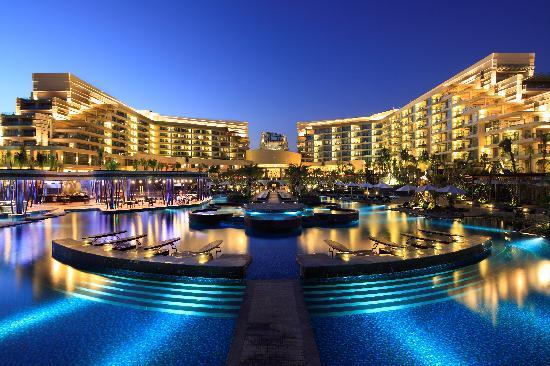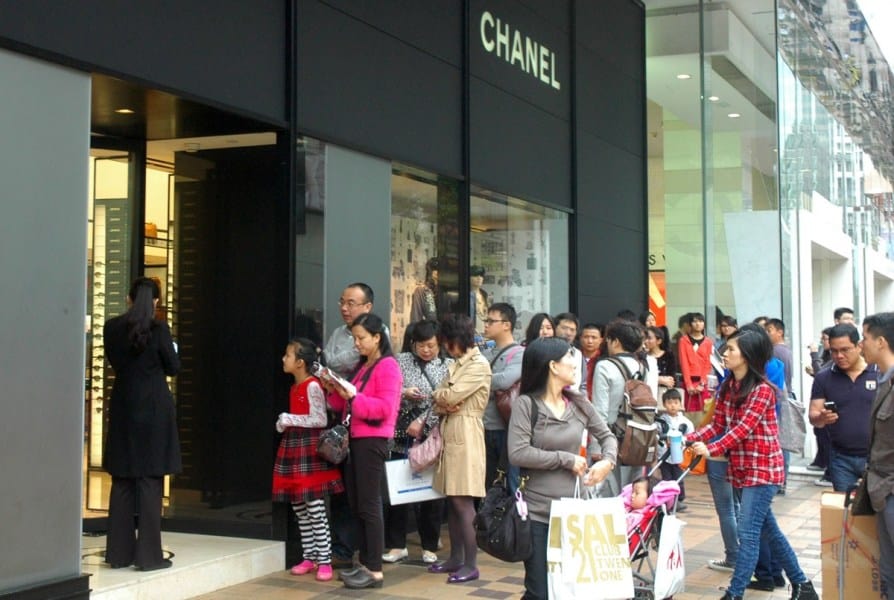Retail travel Trends in China in 2022
What is the Retail travel situation in China in 2021 and for 2022 ?
China’s pandemic response has been different from that of the United States, Europe and the Middle East. This created two worlds. One in which people can travel freely and try to coexist with it, while the other is governed by strict no-Covid policies which prevent people from traveling unless they are willing to endure costly and restrictive quarantine.
This is a problem in tourist-driven countries like France, Italy and the UK. It also affects Thailand, Japan, Thailand, Japan, Thailand, and other countries where high-spending Chinese tourists make up a large portion of luxury sales. When can fashion capitals such as Paris, Milan, and London expect Chinese tourists to return?
China’s zero-Covid policies
“When we look ahead to 2022, it is clear that China’s zero-Covid policies will mean that the border will remain closed for a while longer. China is unlikely to open up soon due to the new variant and key events like the Beijing Winter Olympics. “We can expect strict quarantine measures until late 2022 or longer,” said Chloe Reuter (founding partner at Gusto Luxe and Gusto Collective).
Luxury brands in China
The temporary ban on global travel does not just affect Western retailers. Travel restrictions are also affecting Chinese shoppers.
Luxury brands have attempted to profit from China’s repatriation trend, by increasing prices in China.
The annual revenue of luxury leather goods in China is expected to reach 8 billion USD in 2021 source
Many luxury brands will expand their presence on Hainan Island and invest in duty-free shops.
Brands must continue to explore new ways to offer more commodity options to travelers retail customers. This will be the focus of the Chinese Duty Free Group in 2022.
The emerging markets in newly opened duty-free zones like Qianhai Pilot Area and Henan Pilot No Trade Zone should be of interest to the travel retail sector in 2022.
China hopes that Hainan will become a major holiday destination for overseas and Chinese visitors, in order to increase its retail sales beyond the pandemic.
China is a hub for luxury brand sales and we are now seeing another trend: China’s booming travel market. has been able to develop its tourism industry like no other. It has generated huge revenue from travel retail and has developed a fully-fledged plan to tap into this market.
The plan will have a significant impact on domestic aviation, travel, tourism, and other sectors. It will make it easy for luxury brands to open flagship shops to provide services for travelers.
Hainan, China’s shining example of a tax-free capital has been a success story. Its growth was possible only because of a well-timed government strategy: a dual cycle approach that maximizes domestic consumption while repatriating money from Chinese tourists who often spend overseas.
While the pandemic continues to wreak havoc on every aspect of life, particularly in the US, Chinese consumers will choose to shop at home, as they are more secure, and their favourite Western luxury brands are keen to open stores.
This trend was aided by last year’s Chinese government’s new offshore duty free regulation. It increased the annual duty-free purchasing allowance from $4,700 – $15,600 (30,000 RMB – 100,000 RMB). A decision that was welcomed by both the Chinese business community and Chinese consumers.
A report by Goldman Sachs shows that the global travel retail sector has bright prospects. They expect to see a huge jump in revenue from $89 billion today to $149 billion by 2025. This growth is also a key component of Chinese consumer spending, which is expected to rise from 48 to 56 per cent by 2025. It would be a huge boost for the local economy if China can attract even a fraction of this spending.
Trends in China’s Travel Retail Sector by 2022
The CDFG (Chinese Duty Free Group), has been tirelessly working to create a favorable environment for China’s travel retail industry. Charles Chen, the president of CDFG, spoke out at the recent Virtual Travel Retail Expo hosted by The Moodie Davitt Report. He also discussed the organization’s ambitious plans to improve China’s travel retail industry in 2022 and beyond. He stated that brands should offer more options for products in China’s travel retail market. “And the other important thing that I want to see is more goods specifically for this market.”
Luxury conglomerates have learned China’s new rules after nearly two years of disruptions caused by pandemics and are now able to create and implement winning strategies in China. Retailers may face new challenges in 2022, however, now that Omicron is.
Meanwhile, President Biden issued new restrictions as well as public health protocols to ensure international travel safety. This further upsets tourism and retail. These industries depended heavily on Chinese tourists in the past for their survival. It is clear that these restrictions will put further pressure on retailers.
Without Chinese tourists, European and Asian travel and retail have been stifled. The New York Times reveals that Asian tourists “especially from China” accounted for around 40% of all international visitors to the Colosseum during 2019. Two million Chinese tourists visited Italy in that same year. Although international arrivals to Italy increased compared with 2020, they remained below pre-pandemic levels.
The situation is worse in France than it was in France. According to The New York Times, French tourism promoters had to become familiar with Chinese social media platforms in order to livestream interactive activities such as French cooking classes or virtual trips to Chateau de Chantilly. During the pandemic, 95 percent of Vietnam’s tourism businesses were forced to close down or suspend operations.
The temporary ban on global travel does not only affect Western retailers. Chinese shoppers are also affected by the temporary moratorium on global travel. The daigou industry is at a standstill. Without personal shoppers purchasing luxury goods from overseas, Chinese customers had to shop locally. Luxury brands attempted to profit from this “repatriation” trend by increasing their prices in China.
Luxury will continue to rely heavily upon China, but will learn how to harness the “repatriation” trend
Luxury brands will continue to expand their presence on Hainan Island and invest in duty-free shops in this tourist hub. John D. Idol (Chairman of Capri Holdings), stated that Hainan Island was “on fire” to analysts in February. source Jingdaily
According to state media, the weeklong National Day saw Chinese shoppers spend $252.3 million (1.64 trillion yuan), at nine duty-free shops located in Hainan’s southern island province. CNBC pointed out that this represents a 75 percent increase compared to the comparable period in 2020.
Hong Kong’s dominance will be replaced by Hainan
Hainan is now the leading contender for the Hong Kong luxury crown. The South China Morning Post reports LVMH, Hermes and Richemont are seeking new opportunities in the tropical resort to reach luxury buyers from the Mainland who used to shop in Hong Kong. The South China Morning Post stated that any pivot to Hainan would coincide with the closing of stores in Hong Kong. This could have a long-term effect on luxury retail in the area.
However, Macau has also been experiencing strong momentum. According to Macau Business, Macau’s luxury retail sector is recovering due to mainland travelers returning. After a sharp decline of 41.5 percent in 2020, Macau’s retail sales reached $2.34 billion (MOP 1875 billion) during the first quarter 2021.
Shenzhen is another luxury Mecca that could replace Hong Kong. Shenzhen attracts and grows high-income individuals with its tax cuts and benefits. These consumers are the future HENRYs of the country and are being pursued by luxury brands.
Luxury brands in Hong Kong must be local
The days of luxury shoppers from the Mainland sweeping the upscale boutiques of Hong Kong are long gone. Luxury brands have already restructured their strategies to strengthen their relationships with local customers. Luxury brands will continue to target domestic consumers in 2022 by creating brand experiences that foster deeper connections.
Bloomberg reports that 60 percent of Luk Fook Holdings International Ltd’s sales came from Mainland Chinese customers before the pandemic. The jewelry chain had to adjust to the new realities by launching new loyalty programs for local customers. Luk Fook also benefited from the gold-sales boom that was triggered by the pandemic.
Read more






